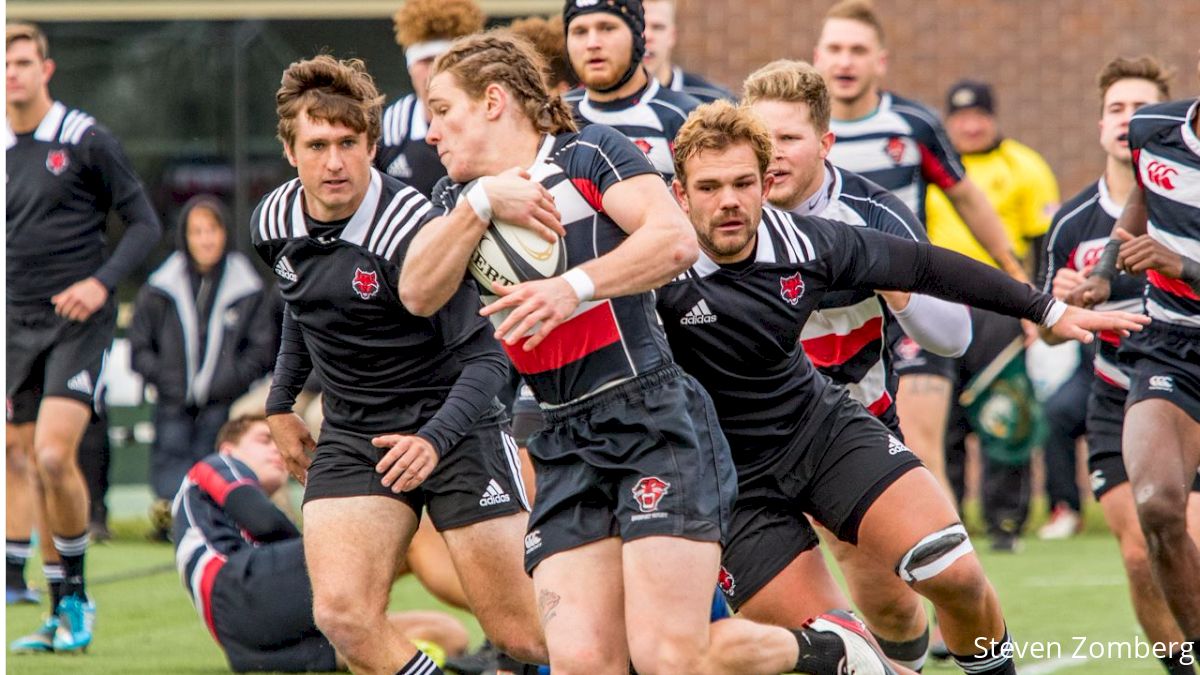The Division Debate Part III: Is D1A Doing Its Job?
The Division Debate Part III: Is D1A Doing Its Job?
Alex Goff looks at what makes D1A college rugby special and whether that's what it should be doing.

In Part III of our series on the structure of men's college rugby, we're taking a look at whether D1A is serving its purpose.
The Division Debate Part I | Part II
Before I answer, perhaps it would be good to know what the job is for this level of competition. Not everyone agrees. When the concept of D1A came across my tiny brain it was in 2009. On the day of the national D1 final, I asked USA Rugby’s then-CEO Nigel Melville if we should have an elite national league of the top college teams.
He asked me how many would be in that league, and I said it would be about eight. “OK,” Melville said, “and who would they be?”
I said Cal, BYU, Saint Mary’s, Army, and Arkansas State… “And who else?” he finished. “You see? It’s difficult.”
Not Enough Teams At The Start
It was difficult in the beginning for D1A. At the time, Life University hadn’t launched its undergraduate team. Lindenwood and Davenport and Notre Dame College were just twinkles in someone’s eye. Central Washington was about to start its push to prominence, while Utah, Penn State, and Navy were around the periphery. That was it.
Still, in 2011 D1A was formed (called the College Premier League back then). And back then I complained that it was 31 teams and it was too diluted. Now, with 70 teams, it’s very diluted now.
(Note, we said in an earlier version of this piece that Utah Valley was dumped out of D1A. That's not strictly correct. They're not in the rankings voting anymore, because they forfeited some games due to fielding ineligible players. But, despite not being considered for the D1A rankings at the moment, they are still D1A.)
Too Many Now?
So what happened? The answer is a change of vision for D1A. Instead of an elite league for the most very elite teams (kind of like that Diamond Elite group that boards the plane 10 minutes before you do), what we have is a massive division that is basically D1 but weeds out some unreliable programs.
But, those inside D1A say they’re fine with this . The conferences, over the years, have become stronger. The games, week in and week out, are more demanding than those in D1AA. It’s been said to me many times. I watch the games and see the difference in intensity myself.
So in some ways each conference is like that old eight-team elite league discussed back in 2009, but only in some ways. We still don't have the pinnacle of competition, and maybe we shouldn't expect it.
Change The Expectations
If D1A exists to create a defined, elite series of conferences that USA Rugby oversees more carefully and gets teams some exposure, then, for the most part, it’s done that job. If D1A has grown and shrunk and grown again in part because the landscape of American rugby is changing and everyone is trying to find their place in it, then that’s OK, too.
But as it is organized now, D1A doesn’t always provide really competitive matches for every team, with an eye toward making the game more fun for all by creating a more challenging environment. The talent pool is spread over about 300 players. The quality of coaching, venues, school support, and almost every other metric is inconsistent.
D1A members can be capricious in how they grant membership and continue to struggle with the idea that more (teams) is better (rugby). I know I recently argued for the addition of several new teams to D1A. But I could also argue that a few other programs need to drop out and get their houses in order.
If I am being really picky I could name a dozen D1A teams that would benefit from a sabbatical to D1AA. But I also think that if you want to be among the top teams and you pitch up every weekend, even if you lose, then you should have that opportunity.
So D1A as a tiny elite competition with the very, very best beating up on each other? No we don’t get that. D1A making men’s college rugby better (and providing us now with a pretty compelling spring playoff)? Yes, we can work with that.